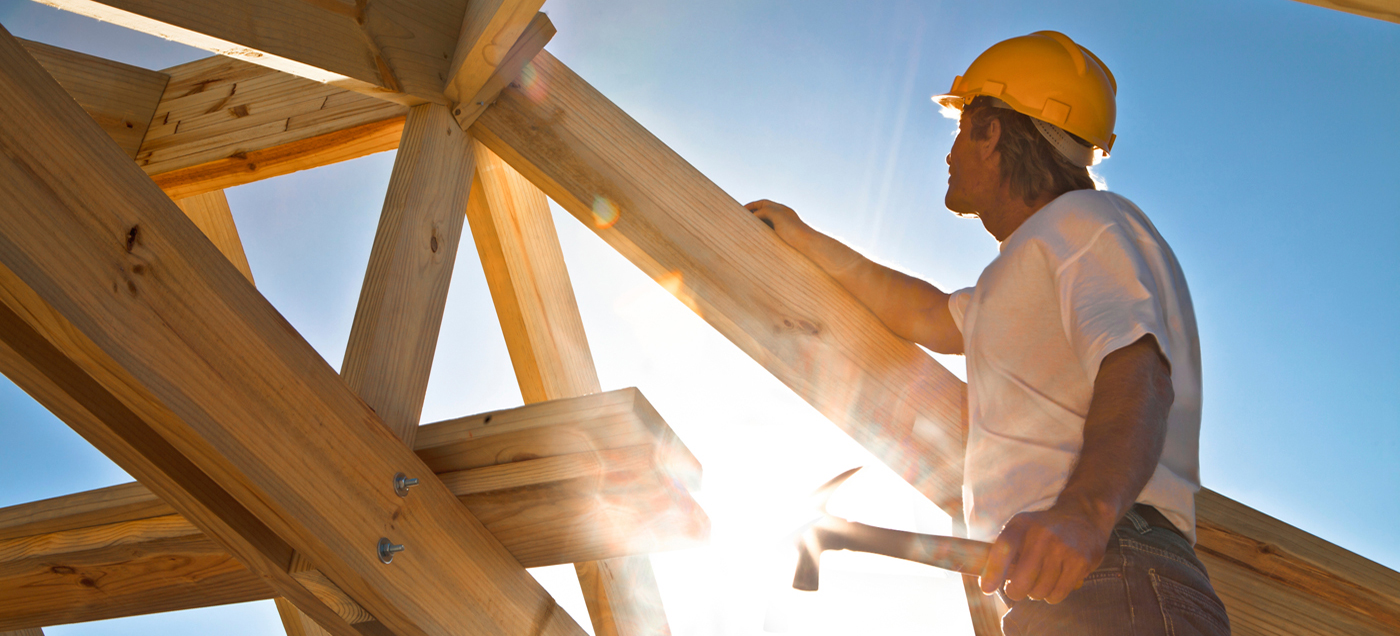The WPJ
THE WORLD PROPERTY JOURNALReal Estate Facts Not Fiction
Residential Real Estate News

Housing Starts in U.S. End 2020 on Strong Note
Residential News » Tampa Edition | By Monsef Rachid | January 22, 2021 8:12 AM ET
Yet HUD reports there are risks ahead in 2021
According to a report from the U.S. Department of Housing and Urban Development and the U.S. Census Bureau, while U.S. housing starts ended the year on a strong note, rising lumber prices and increasing regulatory cost concerns could affect future production. Led by a solid, double-digit gain in single-family starts, overall housing starts increased 5.8 percent to a seasonally adjusted annual rate of 1.67 million units.
The December reading of 1.67 million starts is the number of housing units builders would begin if development kept this pace for the next 12 months. Within this overall number, single-family starts increased 12.0 percent to a 1.34 million seasonally adjusted annual rate. The multifamily sector, which includes apartment buildings and condos, decreased 13.6 percent to a 331,000 pace.
Total housing starts for 2020 were 1.38 million, a 7.0 percent gain over the 1.29 total from 2019. Single-family starts in 2020 totaled 991,000, up 11.7 percent from the previous year. Multifamily starts in 2020 totaled 389,000, down 3.3 percent from the previous year.
"Builder concerns about a changing regulatory landscape may have triggered many to move up their plans to pull permits and put shovels to the ground," said Chuck Fowke, chairman of the National Association of Home Builders (NAHB) and a custom home builder from Tampa, Fla. "Our latest builder sentiment survey suggests somewhat softer numbers ahead due to rising building costs and an uncertain regulatory climate."
"The 1.34 million single-family starts pace in December is the highest since September 2006," said NAHB Chief Economist Robert Dietz. "And while NAHB is forecasting further production increases in 2021, the gains will tempered by ongoing supply-side challenges related to material costs and delivery times, a dearth of buildable lots and regional labor shortages that continue to exacerbate affordability woes."
On a regional and year-to-date basis (January through December of 2020 compared to that same time frame a year ago), combined single-family and multifamily starts are 13.2 percent higher in the Midwest, 7.5 percent higher in the South, 6.2 percent higher in the West and 2.8 percent lower in the Northeast.
Overall permits increased 4.5 percent to a 1.71 million unit annualized rate in December. Single-family permits increased 7.8 percent to a 1.23 million unit rate. Multifamily permits decreased 3.0 percent to a 483,000 pace.
Looking at regional permit data on a year-to-date basis, permits are 7.4 percent higher in the Midwest, 7.3 percent higher in the South, 2.1 percent higher in the West and 5.2 percent lower in the Northeast.
The National Association of Realtors Chief Economist Lawrence Yun commented, "Home construction finished the year with the biggest bang since 2006 with 1.669 million units started for construction in December (annualized). That means the worst of the housing shortage could soon come to an end. More inventory is clearly needed to lessen the heat of multiple offers and the consequent frustration of multiple losing bids. Homebuilders rightly favored single-family units over multifamily condominiums and apartments. Single-family units started at 1.338 million were 28% above one year ago, while multifamily units of 331,000 were 39% lower. Consumers, in light of the pandemic and work-from-home flexibility, have shown a preference for larger-sized homes."
Yun continued, "For 13 straight years prior, home builders have been underproducing below historic norms. Therefore, it will take robust home construction this year and next, at a minimum, to fully supply the market to properly meet the demand. More construction also means more local job creation. The housing sector looks to lead the economy in recovery in 2021."
Sign Up Free | The WPJ Weekly Newsletter
Relevant real estate news.
Actionable market intelligence.
Right to your inbox every week.
Real Estate Listings Showcase
Related News Stories
Residential Real Estate Headlines
- Las Vegas Area Home Prices Uptick 4.3 Percent Annually in March
- Single-Family Rent Growth in U.S. Trends Upward in 2025
- U.S. Mortgage Rates Tick Down Post Trump Tariffs Commencement
- President Trump's 'Liberation Day' Tariffs Potential Impact on the U.S. Housing and Mortgage Markets
- Baby Boomers Biggest Cohort of U.S. Home Buyers in 2025 as Millennials Decline
- U.S. Monthly Housing Payments Hit Record High in 2025
- U.S. Pending Home Sales Uptick in February
- Global Prime Residential Rent Slowdown Continued in Late 2024
- Ireland Home Price Inflation Hits 8 Year High in Early 2025
- Existing Home Sales in America Uptick in February
- Great Miami Area Residential Sales Decline 15 Percent Annually in February
- Mortgage Rates Uptick in Mid-March, Ending 9-Week Decline in U.S.
- World Property Ventures Builds the Future of Real Estate with New Funding Round
- U.S. Builder Sentiment Declines Amid Economic Uncertainty and Rising Costs
- Black Homeownership Rates in U.S. Enjoy Largest Annual Increase of All Racial Groups
- Wealthy Renters Are Taking Over More of the U.S. Rental Market
- If U.S. Congress Does Not Extend NFIP Soon, Thousands of Daily Home Closings Impacted
- U.S. Mortgage Applications Spike 11 Percent in Early March
- Greater Palm Beach Area Residential Sales Rise in Early 2025
- New Apartments in U.S. Are Leasing at Slowest Pace on Record
- U.S. Mortgage Rates Drop to 4 Month Low in March
- Overall U.S. Mortgage Delinquency Rates Dip in December
- New Tariffs on Canada, Mexico to Impact U.S. Homebuilder Input Costs
- Monaco's Property Market: A Tale of Two Cities
- U.S. Home Purchase Cancellations Surge, 1 in 7 Sales Getting Canceled
- U.S. Pending Home Sales Hit Historic Low in Early 2025
- Greater Miami Area Residential Sales Dip in January
- Governor DeSantis Supports Ending Property Taxes in Florida
- WPV Aims to Become the Berkshire Hathaway of Real Estate Tech
- U.S. Home Sales Slump Continues in January
- Average Americans Spend 38 Percent of Monthly Income on Mortgage Payments
- Switzerland's Safe-Haven Appeal Grows with World's Wealthy Homebuyers
- U.S. Builder Confidence Rapidly Declines in February
- Las Vegas Home Sales Rise 6.7 Percent Annually in January, Condo Sales Dip
- Homebuyer Demand in America Drops to 5-Year Low in Early 2025
- Ownership More Affordable Than Renting in Most U.S. Markets
- The World's First Global Listings Service Launches, Called a GLS
- Home Prices Continue to Rise in 89 Percent of U.S. Metros in Late 2024
- Global Luxury Residential Prices Showed Gradual Improvement in Late 2024
- U.S. Construction Hiring Rate Drops to Lowest Levels in 5 Years
Reader Poll
Marketplace Links
This website uses cookies to improve user experience. By using our website you consent in accordance with our Cookie Policy. Read More






